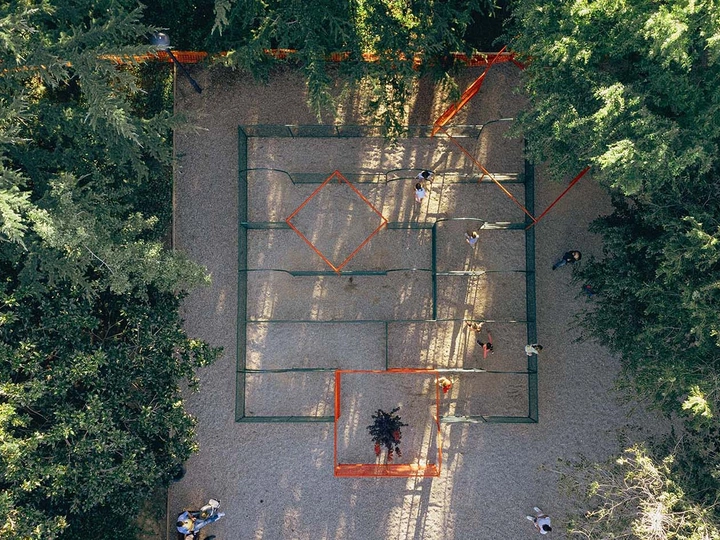Maze

Anna Castellà: architect and co-founder of Arjub. An architecture studio founded in 2017 together with Freddy Léon. Anna works in fields of architecture and public space indistinctly. To empower the profession from a transversal point of view her projects intertwine at the margins of these disciplines. His work has been recognized and awarded on several occasions, including: Selecció als premis FAD a la categoria de ciutat i paisatge (2023), First prize in the Mostra d'arquitectura Catalana de la Demarcació de Tarragona (2023), First prize in the category of Urbanism and first prize in the category of Participatory Processes dels PREMIS AJAC XIII. (2023), work exhibited at the I Biennal d'Arquitectura Jove de Catalunya and work published in various editions, including the magazine 2G, núm 423 i 424, the magazine Proyecto Contract núm 189 among others.
Within the conception of public space, playgrounds have traditionally had a marginal role, linked to the secondary role of children as members of society. This fact causes, especially in cities, that children are restricted in their right to free and autonomous play, as required by the Charter of Human Rights of the Child.
This, together with a first analysis of the quality and distribution of playgrounds in the city's public space, concluded that they were far from meeting the necessary characteristics of accessibility and comfort. In addition, the relationship between the playgrounds and the environment is not adequate in most cases. Firstly, because they are objects whose shape excessively conditions the play activity, limiting creativity and the possibilities for interaction. Then, because they do not usually fit aesthetically in the environment. Finally, because they tend to lack amenities in the space where they are located, such as shades to protect them from the heat, drinking fountains, benches to sit on, etc.
Finally, after this analysis, it was decided to implement a unique play area in Sant Jordi park to promote the importance of play in human development. From this we deduced the need to create a playful attraction for everyone, regardless of age or physical or cognitive abilities, so that everyone could enjoy it in their own way, without rules and with total freedom.
Another of the self-imposed conditions for the manufacture of the game was that it should be made by a local company. This has a double benefit: reducing the carbon footprint and supporting the local economy.
Following these objectives, the solution adopted was a simple labyrinth. It had all the necessary qualities: it could be manufactured by a local blacksmith, the simplicity of the materials and the system made it much cheaper to build, and its design, inherited from the romantic European labyrinths, allowed for an intergenerational and inclusive game.